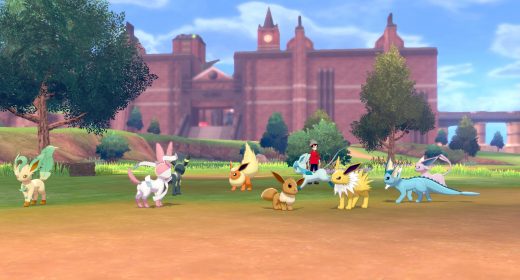The latest animated Pokémon movie is coming to Netflix on October 8th
‘Pokémon Sword’ and ‘Shield’ offer an excellent but familiar adventure
The eighth generation is not a big departure, but it’s still fantastic.

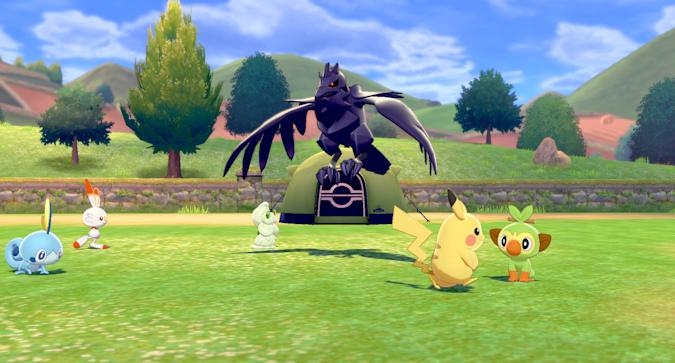
It would be unfair to suggest that the Pokémon games have stagnated. The last generation, which began with 2016’s Sun and Moon, genuinely mixed things up, discarding the gyms and formulaic storytelling for an island-hopping adventure with an actual plot. It’s strange, then, that much of the hype around the upcoming Sword and Shield has been about fresh starts, new eras and major overhauls. In the context of those expectations, Sword and Shield are a disappointment. By every other metric, though, they’re fantastic games.
The setup for Shield¹ is very familiar. More familiar, even, than Sun and Moon. You play a kid who dreams of becoming a Pokémon champion. You wake up in your sleepy town, talk to your mom, pick a starter, battle your friend/rival and set off on a quest to defeat a set number of gym leaders and be the very best.
So far, so similar. In the writers’ defense, there is a short diversion before you leave town, which sets up one of the game’s central mysteries. But, for the most part, Shield takes fewer risks with its storytelling than Sun and Moon did.
Once you’ve chosen your Pokémon (mine was the fire-type Scorbunny) and chatted to the correct people, you board a train and head to the big city. Stepping off at your destination, you immediately find yourself inside the game’s big new feature: the wild area.
The wild area is a national park of sorts that spans most of the map’s center and acts as (to borrow British parlance) a green belt around your first destination, the major city of Motostoke. In the wild area, Shield controls much like any third-person game you’ve played in the past five years, with a free camera controlled by one analog stick and movement by the other. (The rest of the game has a fixed camera.) Much like many modern RPGs, there’s a dynamic weather system in play here, too, which affects what Pokémon spawn.
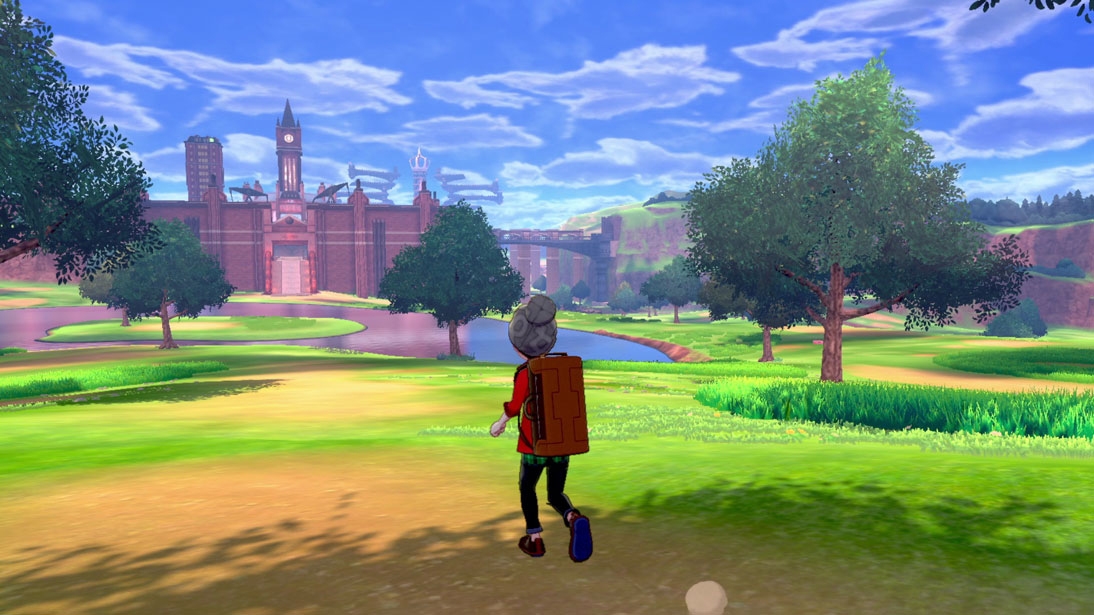
As you’d expect, you’ll find wild Pokémon in long grass. Rather than appearing in random encounters, though, they are now visible and walk, hop or fly around. This is similar to the Let’s Go remakes that came to Switch last year, but the animations here are more dynamic, and some Pokémon will even leave the safety of the grass to chase after you.
Traversing the wild, you’ll come across ballsy monsters just wandering around in the open. These, I quickly discovered, are very overleveled. They definitely add to the “wild” credentials, but the level cap from previous games (you can only catch Pokémon up to a certain level based on your progress through the game) remains in Shield. Struggling your way through a battle with these Pokémon serves no purpose, as you’ll get more experience doing several quicker battles against regular foes, where you also have the option of catching some new friends.
After a hard day’s battling, you’ll want to set up camp. You can do this almost anywhere in the game, but it’s most useful in the wild, where you might be far away from a Pokémon Center. Camps are the latest incarnation of Pokémon Refresh, a feature from Sun and Moon that itself was a remix of X and Y‘s Pokémon Amie. Here you’ll play with and form bonds with your party, and, in a fresh twist, make curry. This is a pretty silly nod to the UK’s favorite dish; you combine ingredients to create a meal that’ll boost your party in various ways. There’s even a Curry Dex for completionists to fill out.
Dotted around the wild are Pokémon Dens, in which you can battle giant monsters, either with other players or random AI characters. There are also characters to talk to here and there and familiar sights like Pokémon nurseries. While the wild area is impressive, for the most part it’s just a more freeform (and therefore less curated) take on the routes you find in every Pokémon game. The initial rush of excitement at having all of this space to explore subsided after a few milquetoast battles. There just isn’t that much to do out in the wild, and after 15 minutes or so I found myself shuffling towards the big city.
Growing pains
I’ve been waiting for a proper Pokémon game to come to home consoles for as long as I can remember. Somehow, though, Shield doesn’t quite work for me on the big screen. Despite all the bells and whistles added over the years, Pokémon is, at its heart, a very simple series with linear progression and often repetitive gameplay. That warm hug of a formula has always been one of its appeals, but playing the first five hours on my TV really didn’t click. Just as in Let’s Go last year, I found myself distracted and not as drawn in as I usually am.
When my Pokémon-edition Switch Lite finally shipped last week, I swapped over to playing on the handheld. Within minutes I was back in the zone, and loving it. Those simplicities and shortcomings are way easier to overlook when you’re staring down at a small screen, getting lost in this tiny world in your hands. For me, this is going to be a largely portable experience, but I’m glad we at least have the option now.
Side note: Sword and Shield do not support Switch Online cloud saves. This is thanks to the Pokemon Home service (which has its own cloud saves) launching next year, but until then you’ll have to hope you don’t lose your Switch, and your progress with it. In the meantime, it’s fairly easy to wirelessly transfer your file between consoles each time if you intend on playing on two devices.
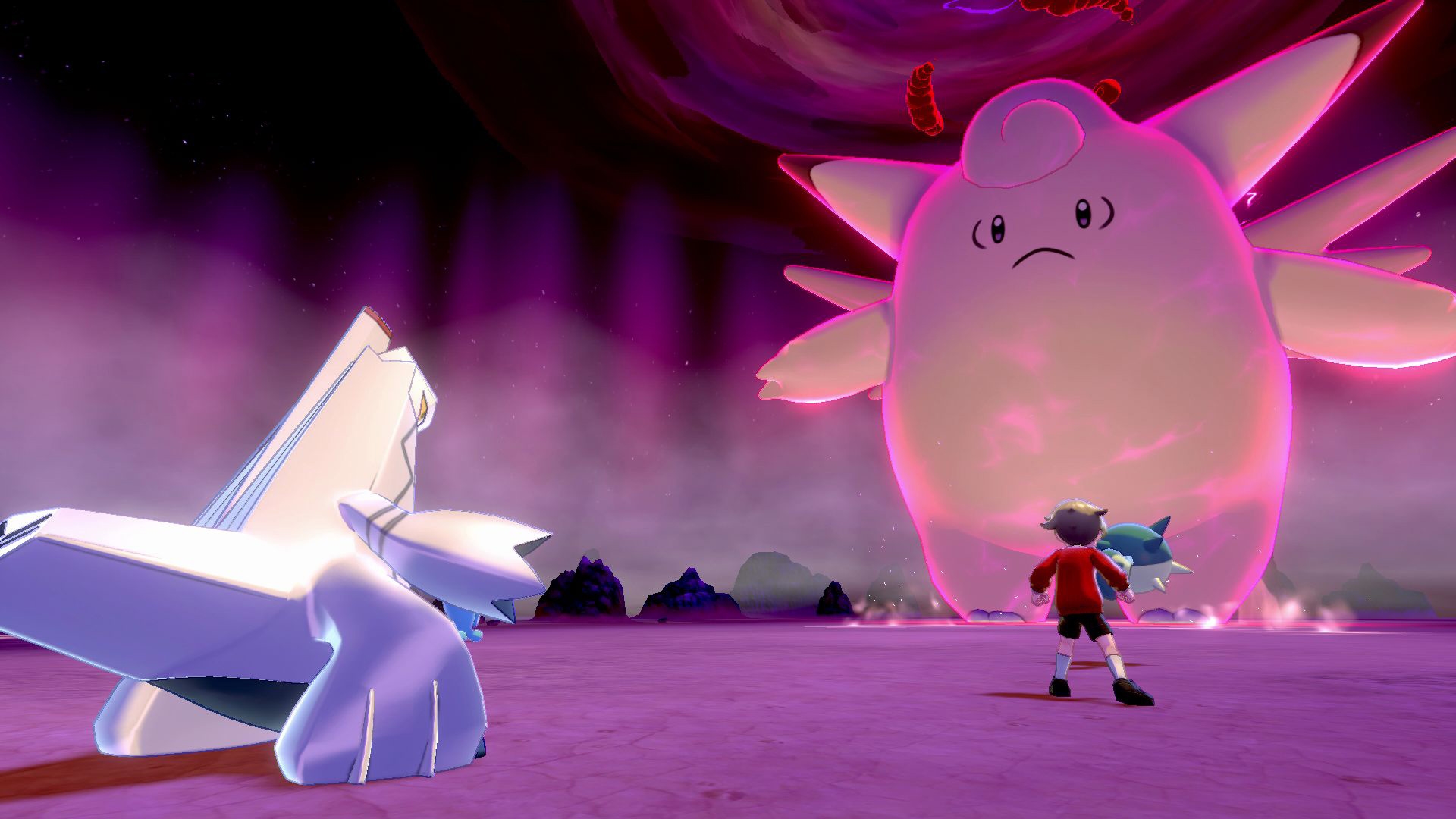
Nintendo
My empathy for the wild area was quickly replaced by wonder upon entering Motostoke. I hadn’t been this impressed by a location in a Pokémon game since I first wandered around the perspective-shifting Castelia City in Black and White almost a decade ago. All of the settlements I’ve entered so far (I’m not done with the game yet) have felt special; the shift from 3DS to Switch has allowed Game Freak to push the complexity of Shield‘s locales forward. Motostoke itself is set across two levels, with a motorized elevator connecting the two. It’s full of characters to chat with, stores to waste your money on and so on. I spent every cent my mom gave me for my journey on the freshest outfit I could find.
From Motostoke, I headed down a numbered route towards a smaller town to take on a gym. It’s here that I found myself asking why the wild area exists. Routes are a highlight in Shield, with unique ecology, well-designed layouts, entertaining trainer encounters and beautiful artwork. Making your way through Galar mine, illuminated by colorful lights and teeming with Pokémon, feels so different to rushing through caves in prior games, praying another Zubat doesn’t attack. A later route, which had me exploring a bioluminescent forest, was similarly stunning.
The battles you’ll find yourself in aren’t a huge departure from the norm. It’s still PhD-level rock-paper-scissors, Pokémon can still remember a maximum of four moves at any given time, and trainers you meet are still useless when it comes to understanding type matchups.
One improvement in battle is that, once you’ve got a Pokémon registered in your Dex, the game will indicate whether a move is effective against them. Even as someone who has played every game through to completion, I find this feature handy. I might have the fundamentals down, but remembering the exact type combination of every Pokémon is beyond me.
This is one of many little quality-of-life tweaks in Shield. Perhaps the biggest three are access to your boxes (where Pokémon not in your party are stored) from almost anywhere, the ability to train benched Pokémon with Poké Jobs and that the game now auto-saves your progress, if you want it to.
British influence
Galar is stuffed full of references to Britain — too many to mention here. You’ve no doubt seen some of the more obvious ones. Pokémon that look like teapots, knights and corgis are pretty on the nose, but among the red pillar boxes, there are some smaller touches. A town you visit early in the game has its own hill figure, a nod to the prehistoric art dotted around the UK; you call your mom “mum;” and some NPCs omit the “g” from the end of “ing” words, mimicking how some Brits (includin’ me) speak.
I was a bit concerned with the flood of novelty Pokémon announced over the past few months, but playing through, it feels more like a love letter than a parody. That makes sense: James Turner, the Brit who became the first Westerner to design a Pokémon, is art director for Sword and Shield. Perhaps the best thing I can say about the game’s understanding of British culture, though, is that characters alternate their use the word “mate” accurately, switching between passive aggression and friendliness as appropriate.
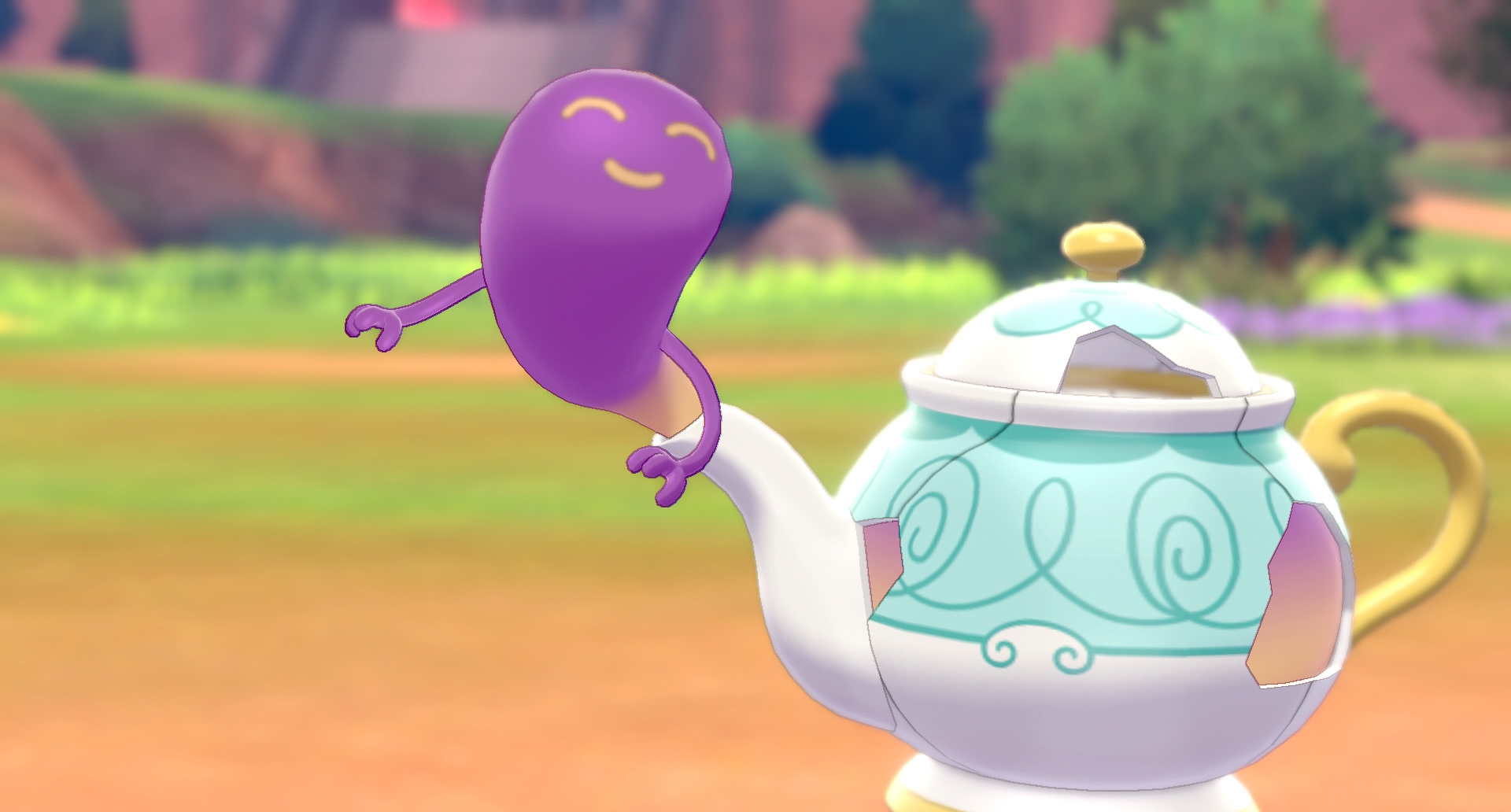
Nintendo
Having made it through the route, I reached my destination — a rural English market town — ready to win my first gym badge. Galar, taking cues from Britain’s obsession with ball games, has its gyms inside stadia filled with crowds of spectators and broadcast cameras. Before you can take on the gym leader, though, you have to complete a gym challenge. This formalizes some of the puzzles in other Pokémon titles by presenting a minigame themed around the gym type. You might find yourself herding sheep Pokémon towards a goal, solving a switch puzzle to divert water or flexing your Pokémon knowledge, usually battling a few trainers along the way. Despite their name, these don’t offer a huge challenge, but they do at least add some variety.
Shield‘s final “big feature” (pun intended) is best showcased in the gym leader fights. Dynamaxing is a new option in Pokémon battles that allows you to turn your adorable critter into a building-sized beast for three turns, increasing its health and the efficacy of its moves. This is quite the visual showcase and adds some spectacle to these fights. However, it serves the same strategic purpose as the Mega Evolutions introduced in X and Y back in 2013. The only real difference is that Dynamaxing is limited to set locations — typically at gyms or those dens in the wild area.
While it’s functionally familiar, I have yet to tire of seeing what the giant versions of various Pokémon look like. While a lot of them are predictable, occasionally you see a transformation that induces a “wow.” One of the original 151 I met at a gym has the best Dynamaxed form, but the terms of Nintendo’s review embargo will sentence me to a life in Poképrison if I say which.
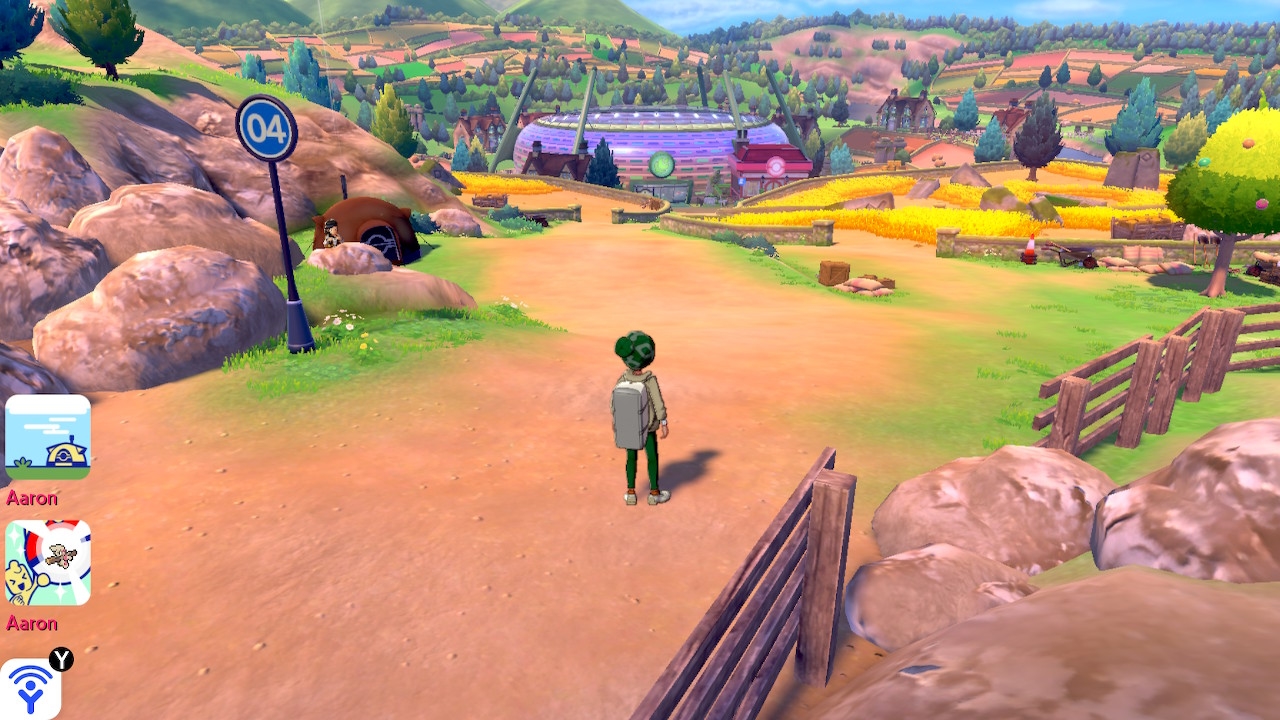
At this point, I’ve made it through a significant number of Shield‘s gyms and a sizeable chunk of the story, too, but I decided a few days ago to put my playthrough on pause. Why? Well, Pokémon has always been designed to be a social experience, and that’s still true in Shield, but I don’t have anyone to play with yet; I don’t want to finish the game in isolation.
As you’d expect, there are numerous online features that will be switched on at launch. Trading and battling are both present in various forms, along with new ways to play. You can team up with friends or randoms to battle giant Pokémon in dens, visit camps of other players to meet their Pokémon and enter online competitions. With the… switch to the Switch, these features look set to be both better integrated and less hassle than ever before, and I’m really looking forward to digging in. For now, though, there’s no way for me to explore beyond seeing how the menu is laid out. (It’s laid out sensibly, for what it’s worth, with many online features available with a single button-press from almost anywhere in the game.)
The National Pokédex
It’s 2019, and therefore, not even a Pokémon game is free from vitriolic reactions once reserved for mass murderers and politics. Here’s why:
A vocal section of Pokémon fans is angry because the National Pokédex is not in Shield. The National Dex is a feature dating back to the early sequels, where, in the latter stages of the game, your Pokédex is unlocked to let you register Pokémon from other titles in the series. This feature has meant that completionists are always able to fill out their Pokédex with every known Pokémon. Do note, though, that many Pokémon from older games are present in Shield — just nowhere near all of them.
The ratio of completionist-to-non-completionist Pokémon fans is likely way higher than that of other games, given it’s a series about catching ’em all. But while these fans’ disappointment is understandable, I can’t say the lack of a National Dex has or will affect my enjoyment of this game. Where you stand on the issue will generally depend on whether you feel like fans should have ownership over the media that they enjoy. (I do not.)
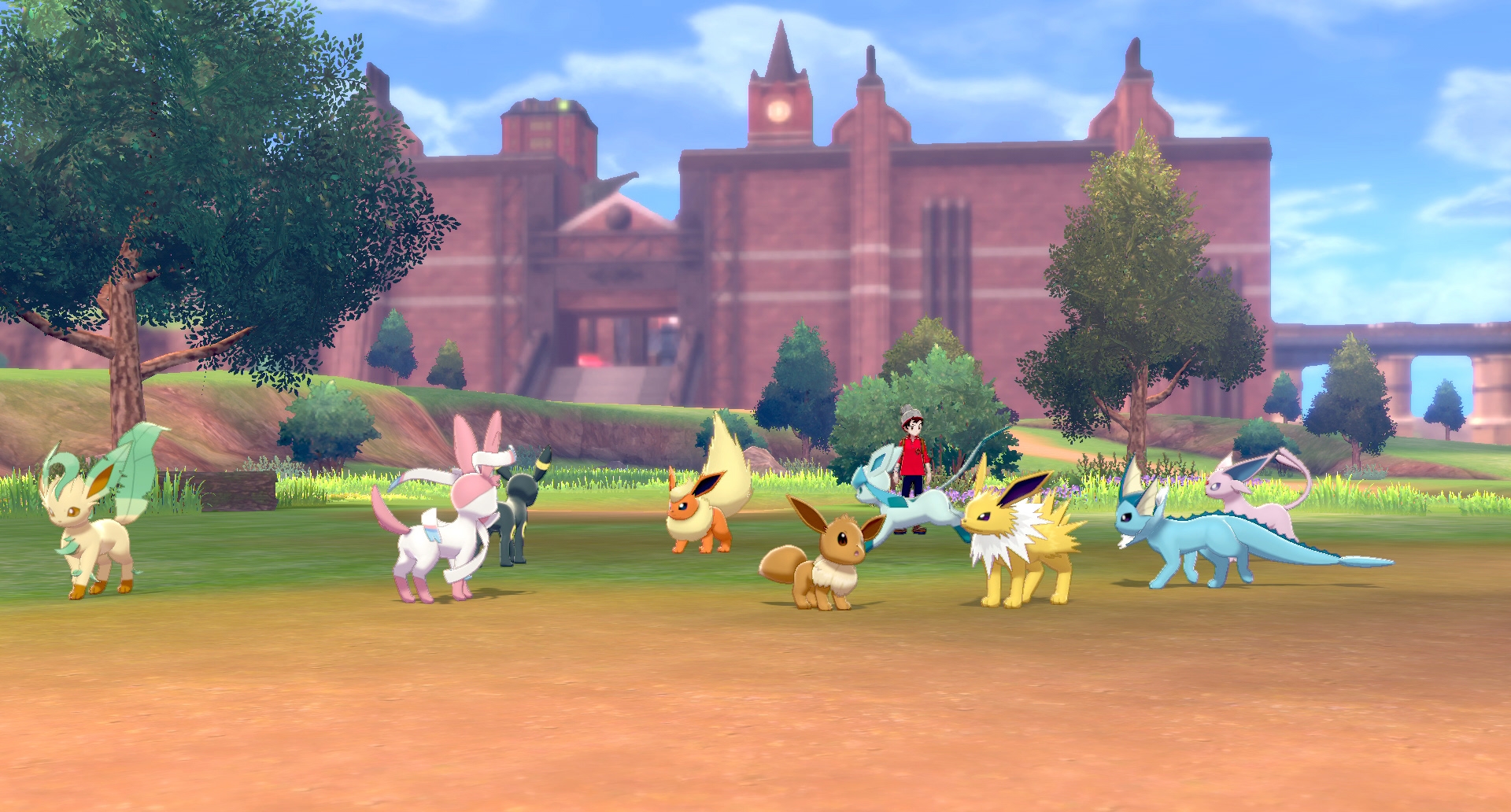
Nintendo
If it sounds like I have mixed feelings about Shield and the eighth generation of Pokémon, I don’t. The story isn’t particularly special, and all-told, it’s no big leap forward, but Pokémon has never looked this good or played this well. I still yearn for a grand JRPG that drastically shifts the way we think about the series, or even just a story as strong as some of the movies’, but as a Pokémon game, Shield is a triumph.
I would happily recommend Pokémon Shield for a nine-year-old child, for someone new to the series, for old hands like me or for my sixty-something Pokémon Go-loving mother, safe in the knowledge that each of them will enjoy it. Put aside your misgivings about missing monsters and moves and just embrace the fact that we have a new world to explore, new critters to get to know and what sounds like a pretty robust year of online competitions on the way.
(30)

